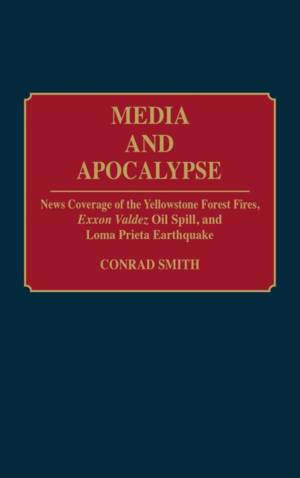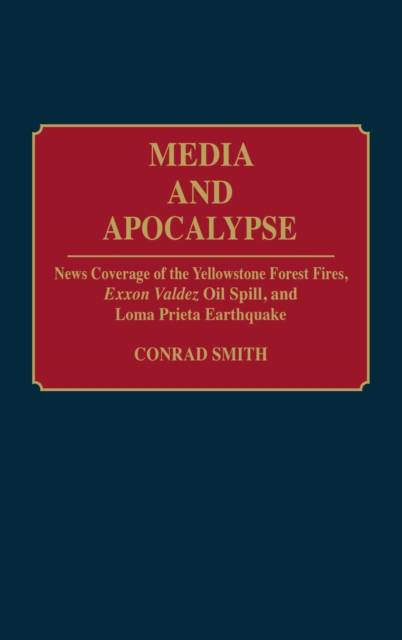
- Retrait gratuit dans votre magasin Club
- 7.000.000 titres dans notre catalogue
- Payer en toute sécurité
- Toujours un magasin près de chez vous
- Retrait gratuit dans votre magasin Club
- 7.000.0000 titres dans notre catalogue
- Payer en toute sécurité
- Toujours un magasin près de chez vous
Media and Apocalypse
News Coverage of the Yellowstone Forest Fires, EXXON Valdez Oil Spill, and Loma Prieta Earthquake
Conrad SmithDescription
This book is a critical examination of how newspaper and television journalists reported three catastrophes. The focus is on the processes by which journalists identified news sources and gathered data, on the professional values of the journalists and on the ways that those values contributed to or interfered with good reporting. The book is based on examination of several thousand newspaper and television stories, on surveys of more than 600 journalists and their sources, on evaluations of news accounts by independent experts, on personal visits to the sites of the catastrophes, and on interviews with more than 100 reporters, correspondents, producers, editors, and their sources.
The scholarly goal of the book is to provide a theoretical understanding of the process by which reporters gather information for these kinds of stories and thus to identify changes in the journalistic routine that might encourage more accurate and comprehensive coverage of public issues. He shows how television reports sometimes influence the ways print reporters structure their stories, an effect he calls journalistic priming. He examines the ways in which Pulitzer Prize-winning stories are different from others, and attempts to integrate reporters' and sources' comments with the theoretical literature. This is the first book-length effort that uses a single research design to compare how both print and television journalists covered several major events, and to examine the interrelationship between the television and newspaper reporting. Other scholars often ignore one or the other, as though the two media operated independently.Spécifications
Parties prenantes
- Auteur(s) :
- Editeur:
Contenu
- Nombre de pages :
- 228
- Langue:
- Anglais
- Collection :
Caractéristiques
- EAN:
- 9780313277252
- Date de parution :
- 26-10-92
- Format:
- Livre relié
- Format numérique:
- Genaaid
- Dimensions :
- 156 mm x 234 mm
- Poids :
- 503 g

Les avis
Nous publions uniquement les avis qui respectent les conditions requises. Consultez nos conditions pour les avis.






